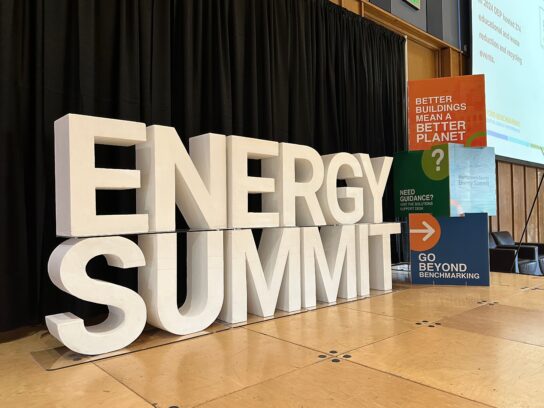
Montgomery County is moving on from benchmarking its energy consumption and needs to pouring resources toward a net free greenhouse emissions area by 2035.
“We are in action mode,” declared Montgomery County Council President Kate Stewart Wednesday on the second day of a two-day Energy Summit hosted by the Montgomery County Department of Environmental Protection (DEP) at the Silver Spring Civic Building.
Even while he stressed the necessity for a greener environment, County Executive Marc Elrich declared, “None of this is cheap.The boundary is always going to be the budget. That will always be our challenge.”
County government can only do so much, he said. “Until private owners green their buildings,” and homeowners convert from gas to electric, “We can’t achieve our goals.”
Despite recent federal cutbacks and attempts to ease current environmental restrictions Elrich said,” We remain committed.”
In 2024, the county spent $1.5 million for home weatherization and electrification. More than 1,600 households joined the Capital Area Solar Switch program. Additional items became eligible for recycling, and more than 4,000 trees were planted throughout the county. One tree can absorb as much carbon dioxide in a year as a car produces while driving 26,000 miles, according to DEP.
Soon Victory House in Takoma Park will be electrifying all 186 units at the senior housing community through a fully funded grant secured by Maryland. This will reduce emissions, lower utility costs and improve air quality for seniors on fixed incomes, Elrich said.
DEP Director Jon Monger praised efforts throughout the county. “One of the amazing things about Montgomery County is the consistency in which we approach our work.”
Summit keynote speaker Carl Elefant spoke about best ways to decarbonize buildings already in use. Waiting to erect carbon-free buildings will take “decades,” he said.
“The real energy crisis that exists is that we have a country that is addicted to toxic energy,” he declared, adding that during 2024, the United States pumped more crude oil than any other nation in the world. “We are poisoning ourselves to solve energy needs” when there are better ways to achieve zero CO2 emissions, he said.
Electric vehicles are environmentally better than those that need gas, but they are not the solution, he said. Rapid bus transit is a better way to reduce emissions and end traffic gridlock.
Sessions throughout the summit included successful building decarbonization, electrifying fleets, financing strategies for businesses and integrating high-performance design in multifamily structures.
I was pleased to attend our Energy Summit—an important resource for building owners, managers and industry pros to learn ways to cut emissions, save energy, and lower costs. It’s a great example of how we can come together to build a more sustainable future for Montgomery County. pic.twitter.com/CLas6kq9Qs
— County Exec Marc Elrich (@MontCoExec) April 9, 2025
Day 2 of the County Energy Summit features talks on decarbonization, net zero energy, financing energy projects and lots of networking. @mymcmedia @MyGreenMC pic.twitter.com/b3PF8n3tGh
— suzanne pollak (@SuzannePollak) April 9, 2025

